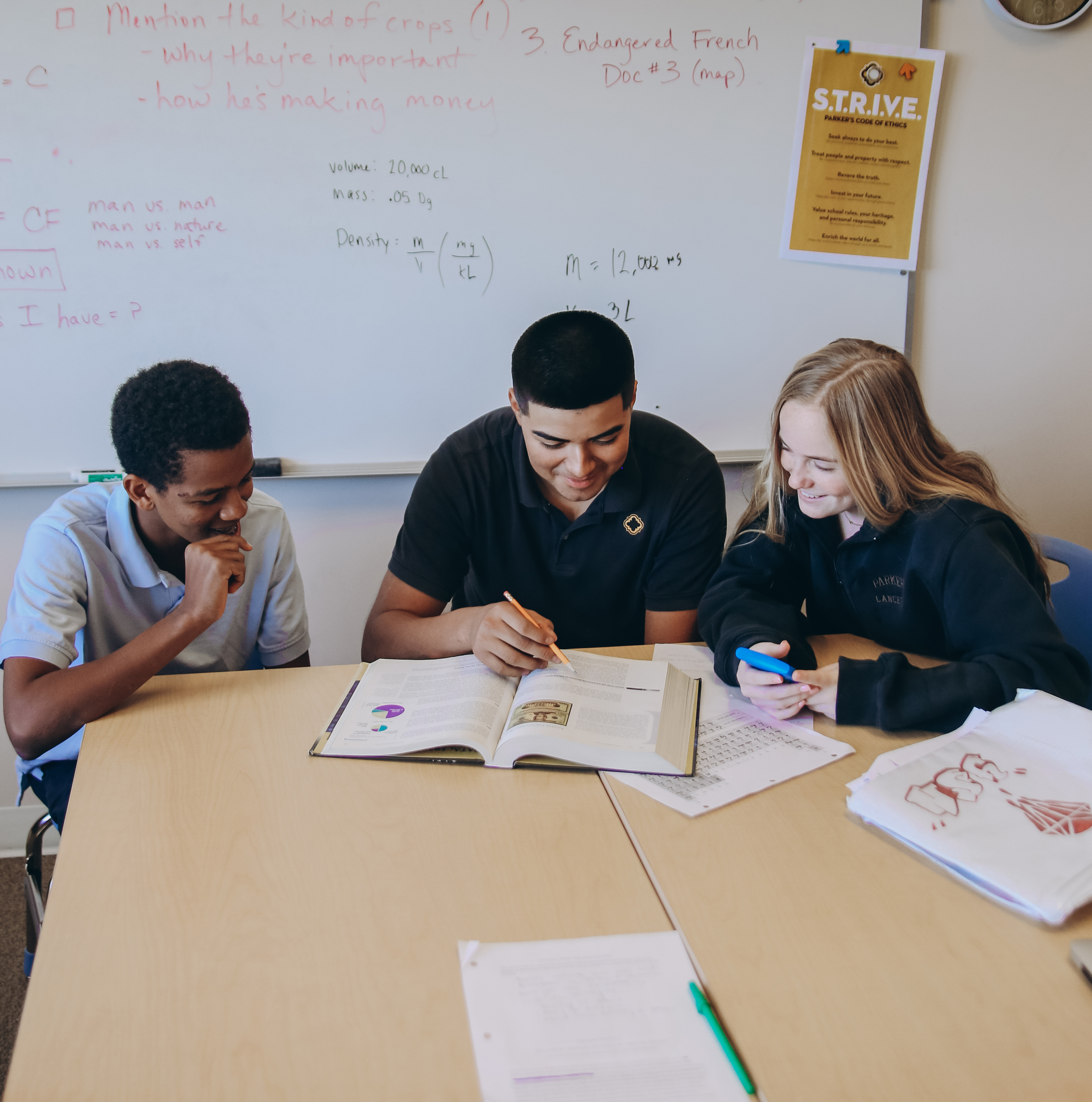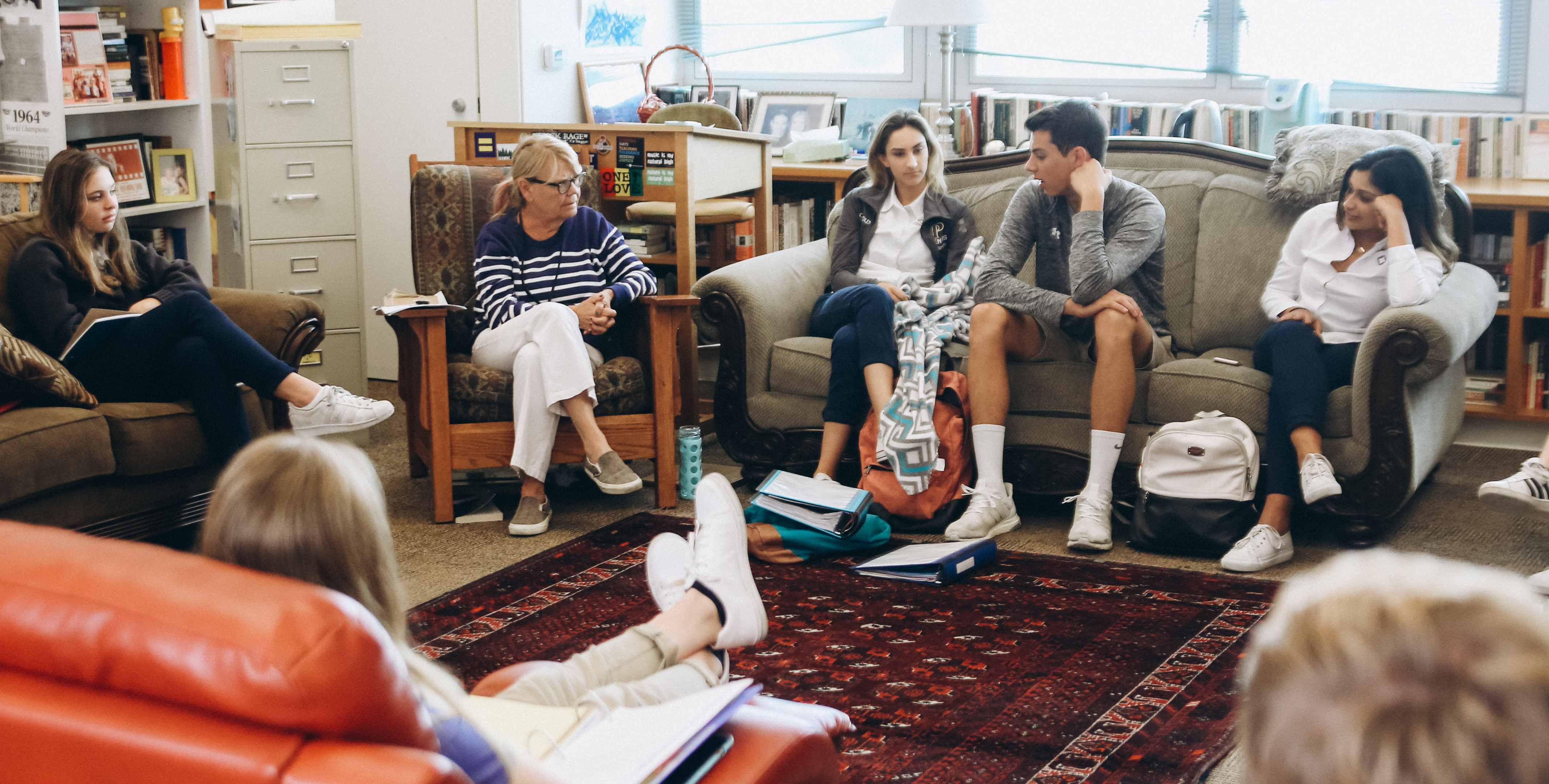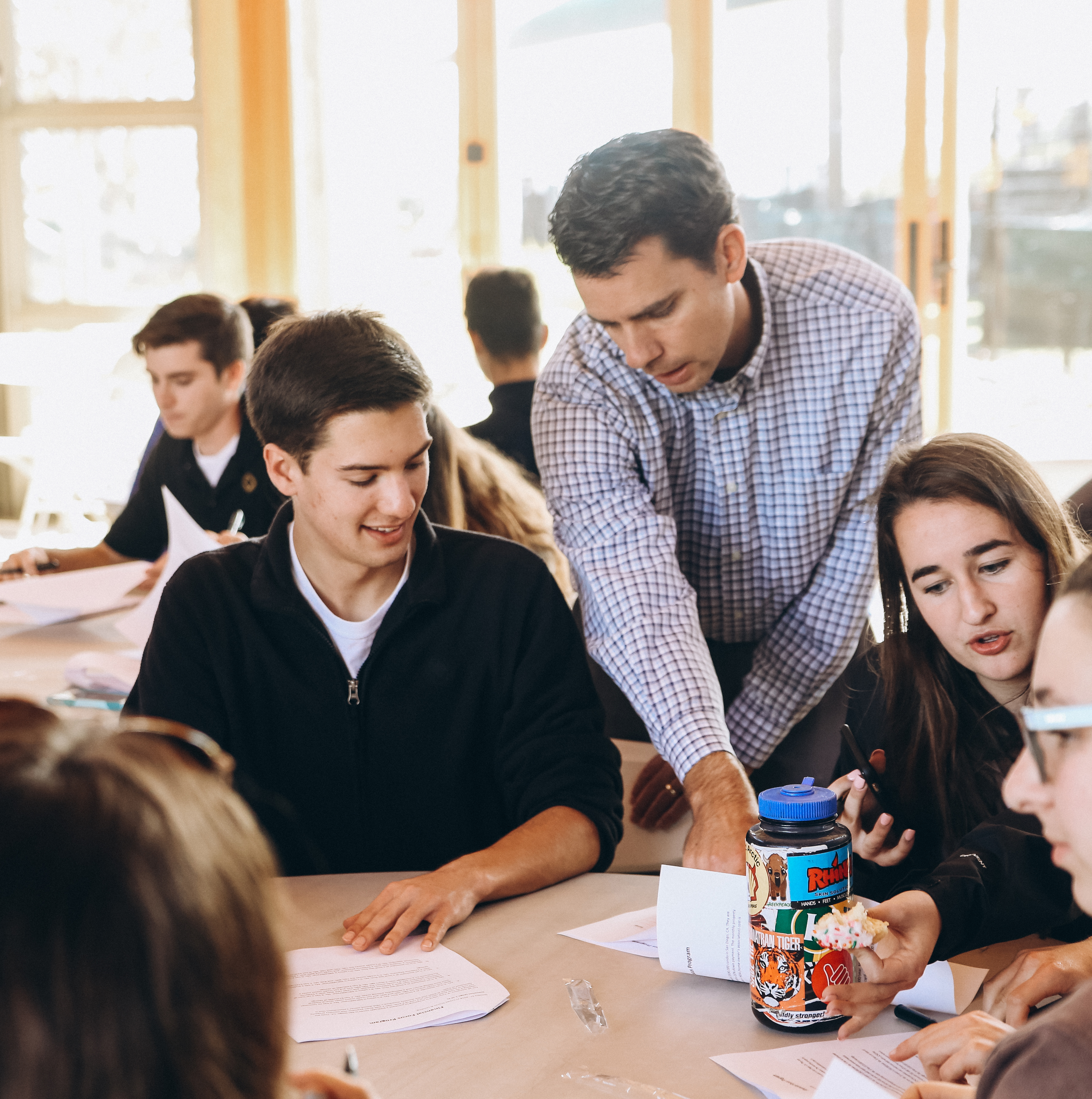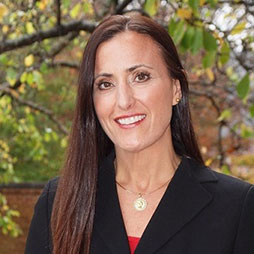



by Head of Upper School Dr. Monica Gillespie
“You rarely have time for everything you want in this life, so you need to make choices. And hopefully your choices can come from a deep sense of who you are.”
~Mr. Rogers
Happy New Year! It’s that time of the year: time when we reflect on our lives—the past year and the year ahead. For me, I begin with being happy about staying up until midnight and pretending to be in Times Square on east coast time. Check that box next to “I’ve still got it.” While many of us have a list of things to accomplish (learn to surf) or proxies for health and wellbeing (being able to stay up until midnight), having “the list” is what allows us to thrive because it comes from “a deep sense of who [we] are.”
What is on “the list” varies according to each person’s purpose in life. During this time of taking stock of our lives and creating resolutions, I am reminded of the importance of purpose in determining on what we focus our efforts—our answers to questions like “What matters most to you? What are the things you really care about? If you could change anything in the world, what would you change?”* “The list” is what guides us; it reflects our purpose.
As I have written frequently in my messages, adolescents must have a sense of purpose to thrive. In the Upper School, we work hard to provide curriculum and programming to help our students explore and find out who they are and what is meaningful to them. Our community engagement program, our character education program and the upcoming interim week are a few examples of how students have the freedom to follow what interests them.
Crucial to helping our students on the journey to finding their purpose are the people rallying behind them every step of the way. According to Heather Malin, director of research at the Stanford Center on Adolescence and author “Teaching for Purpose: Preparing Students for Lives of Meaning,” critical to supporting our students is the partnership with parents.
At Parker, we are committed to ensuring that in partnership with parents we foster the development of purpose for each student. Malin points out the impact of this support, “family, friends, and other important people support purpose by noticing and encouraging a young person’s interests, values, strengths, and goals…[Adolescents] with purpose were more likely than their peers to say their family members encourage their personally meaningful goals and interests. They also got the message from their family that they could take risks in pursuing their goals because there would always be a safe landing for them at home if they failed.” With the commitment of family, friends, and other important people to the development of purpose in the lives of our students, our students will thrive.
The development of purpose in children and adolescents is a growing field of study with research that can be translated into understandings and actions that are accessible to all of us—parents and educators. Below please find more information about purpose as presented by Malin in “Teaching for Purpose.” My intention in sharing these excerpts is to be helpful to you and to inspire conversations you can have with your children in the coming months.
What is purpose?
“Purpose is a future-directed goal that is personally meaningful and aimed at contributing to something larger than the self. Purpose is a driving force that motivates and organizes shorter-term goal setting, goal action, and behavior. With a sense of purpose, young people are more inclined to seek out and gain skills and expertise they need to fulfill their goals, so purpose can drive learning that results in the necessary college and work-life skills to succeed.”
What strengths or core capabilities does developing purpose require?
- “Self-regulation- the set of skills that enable students to select appropriate goals and regulate their behavior to pursue their goals.
- Agency– students’ ability to take effective action and determine that their actions are having the desired impact in the world.
- Values– a strong sense of what matters to them and why, and awareness of what they believe is good and right for the world.”
What are the three dimensions of purpose?
- A Meaningful Goal
- Beyond-the-Self Motivation
- Action
What is the first dimension: A Meaningful Goal?
“A Meaningful Goal is intrinsic, broad, meaningful, and future-minded…evolves over time, personally meaningful aspirations, …[it] can branch off into other meaningful goals. They can feel impossible to pursue. However, by looking to the future with a sense of what really matters and envisioning the kind of person they want to be, and then setting intentions that align with that vision, students can create a life of meaning. And when that vision of who they want to include being someone who has a positive impact in the world, students are more likely to feel the force of purpose driving them to organize their short-term goals and activities toward being that person. The path they set out on will not be a straight line but will be more like the boat finding its way on open water, directed but not direct, taking in experiences and allowing their experiences along the way to influence the course. That is purpose.”
What are some guiding questions for A Meaningful Goal?
“Young people can think about questions like the following to work toward identifying potential purpose goals:
- What kind of person am I now, and what kind of person do I want to become?
- What do I need to do during my lifetime to feel that my life has a purpose?
- What does a successful like mean to me?
- Which of my strengths or values do I want to define me in the future?”
How can we support the first dimension of purpose?
“To support young people in developing the first dimension of purpose, opportunities for future-thinking should be grounded in the reflection of one’s personal values. Higher-order, future-minded goals can give a sense of purpose when they are an expression of what we find meaningful, our identity, our values, so students should first take time to reflect on what matters to them and why.”
What is the second dimension: Beyond-the Self Motivation?
“Purpose goals are personally meaningful, but what differentiates them from other important, higher-order goals is that they emanate from our desire to make a positive difference in the world…Goals that reflect ‘thinking about the kind of person they want to be in the future and have a strong vision of who they want to become.’”
“In our interviews, adolescents who said the adults in their life encouraged them to pursue academics and financial success were less likely to be purposeful than those who heard messages of encouragement for their meaningful interests and beyond-the-self concerns.
Young people who focus on self-oriented success are looking away from the points where they come into contact with the world. They are focused in winning the competitions of life set up for them rather than attending to how they can contribute to the greater good.”
“The second dimension of purpose is to contribute in a beneficial way to the world beyond the self. Although it is a strong drive and the heart of human purpose, it can be drowned out by more self- enhancing motivations in our success-oriented society. Young people need encouragement, role modeling, and support to listen to their other-oriented concerns and interests over the racket made by our self-absorbed, individualistic society.”
“Purpose does not come from having a generally kind or empathetic personality and also having meaningful, self-satisfying life goals. It is created when we integrate our compassion for others, sense of social responsibility, and moral virtue with our thinking about who we want to become and what we want to accomplish in life.”
What are some guiding questions for Beyond-the Self Motivation?
Young people who are developing beyond-the-self motivation consider questions such as:
- What do I want my life to represent?
- What would I change about the world if I could change anything?
- What are some things I am grateful for? What do I do to express my gratitude?
- Which of my strengths can I develop to become my best self?
How can we support the second dimension of purpose?
“Adolescence is an important time for the integration of a moral sense of self with higher-order, future-oriented goals. During this time, teens’ sense of social agency is growing…They are increasingly able to participate in shaping their community and society. With healthy social development, adolescents make gains not only in developing social agency but also in developing a strong sense of social responsibility. They may come to see that the success of society depends on everyone’s contribution. At the same time, they are developing a greater capacity for moral reasoning.”
“Adolescent social and moral development is concurrent with one of the most important phases of identity formation when young people are figuring out what kind of person they want to be and what role they want to take in society…With a well-developed moral identity, young people have a strong foundation for the second dimension of purpose–for beyond-the-self motivation– because they will be inclined to set life goals that accord with their identity.”
“As young people shape their identity by reflecting on their most central values, they can identify and commit to meaningful, values-driven future goals.”
What is the third dimension: Action?
“The first two dimensions of purpose capture what we tend to think purpose is–a goal for life and a reason to live– both of which are ideas. However, purpose is actually in what we do, not what we think about doing. We have purpose when we commit to a goal or intention and take action on it. This is not simply a matter of how purpose is defined; the actions people take to realize their purpose affect the extent to which they feel purposeful.”
What are some guiding questions for Action?
“Young people can plan for purposeful activities by reflecting on the following questions:
- What are some actions I can take to demonstrate to others what my most important values are?
- What steps can I take to become the kind of person I want to be?
- What small, specific goals can I work on right now to make progress toward realizing my dreams?
- What resources will I need to act on my goals and overcome challenges along the way?”
How can we support the first dimension of purpose?
“Purpose asks us to be future-driven, engaged, and active to accomplish our goals…It is not just activity for the sake of being driven or doing as much as possible. Purpose activity can be challenging, but should not be stressful in the sense of harried or overwhelming. By engaging in activities that reflect our values, or are based on future-minded goals and beyond-the-self motivation, the activities are focused, mindful, and intentional. Priorities are identified and activities that are not prioritized fall away.”
How can we support all three dimensions of purpose?
Importance of reflection—“We need to reflect on our activities to check their alignment with our most meaningful goals, examine how our actions express our values and cause the impact we hope to have in the world.”
“Teens can develop and integrate these dimensions of purpose when they have opportunities to act on their values and reflect on what causes the problems they see in society. With ample opportunity to act on their values and reflect on their values-driven activities, the purpose cycle is set into motion.”
“When [students] see that they can make a difference, students come to see themselves as people who can and should have a positive impact in their world. At the same time, teens are thinking about what roles they will take in the world, and school can shape how they envision their future roles. If they have exposure at school to adults who model prosocial activity, values-driven activity, and purpose, they will see themselves taking on roles that have those qualities as well.”
“Ideally, as students get older, they will find increasing opportunities to reflect on their values and practice setting big, future-oriented goals based on their values, then working on smaller goals that time them step-by-step toward achieving those bigger goals. By doing so, the roles they envision for themselves will be shaped by purpose.”
“The thing I remember best about successful people I’ve met all through the years is their obvious delight in what they’re doing and it seems to have very little to do with worldly success. They just love what they’re doing, and they love it in front of others.” ~Mr. Rogers
*Malin, Heather. Teaching for Purpose: Preparing Students for Lives of Meaning. Cambridge: Harvard Education Press, 2018. Print.
